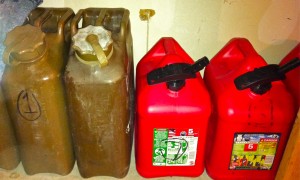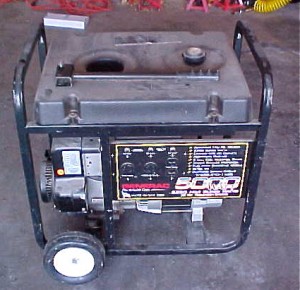Weathering The Storm
 Western Washington had a pretty good storm last week. I realize, in the larger category of “winter storms”, this wasn’t anywhere among the worst. That being said, it was a big deal around here – we don’t have storms like that very often. What started off as a good amount of snow coming down, transitioned into an ice storm. The tree branches were weighed down and many broke, taking down power lines and causing a power outage that affected close to 300,000 homes.
Western Washington had a pretty good storm last week. I realize, in the larger category of “winter storms”, this wasn’t anywhere among the worst. That being said, it was a big deal around here – we don’t have storms like that very often. What started off as a good amount of snow coming down, transitioned into an ice storm. The tree branches were weighed down and many broke, taking down power lines and causing a power outage that affected close to 300,000 homes.
We were one of those homes, our power was out for about 36 hours. So when life gives you lemons… I figured this was the perfect opportunity to test our preps! At 7:30 am, as Sarah and I were in the Jeep driving back from the train station (the trains were cancelled because of frozen switches), I got the call the power was out. As I drove up to the house, even though I knew the power was off, I still tried to use the garage door opener (habits). First lesson of the power outage: make sure everyone knows how to manually open the garage door.
 Since we have had a couple of “lights-out” drills we knew where to start. We:
Since we have had a couple of “lights-out” drills we knew where to start. We:
- ‘Fired-up’ the battery bank and, using a volt meter, checked and recorded the starting voltage (12.6 volts).
- Ran a 50 foot, 14-gauge extension cord into the house and plugged it into a surge protector for inside use.
- Connected another extension cord to the natural gas furnace to run the blower*.
- Put a temperature probe inside the deep freezer (in the garage), with one end out so that it could be easily read, and recorded the starting temperature (10 degrees).
- Brought lamps, with low energy bulbs, into the main room and plugged them into the surge protector.
The battery bank operated well that day. My parents, visiting from Colorado, were able to appreciated all our preps. My mom was especially grateful to be able to blow dry and curl her hair (before leaving to see more family) – she felt this alone justified all our preparations. We had heat (though we kept it lower than normal, 62 degrees), light, Ryan was able to play Xbox, and we watched a movie after dinner. Every couple of hours we’d check and record the battery voltage and the deep freezer temperature.
However, when we woke up the next morning I realized the heat wasn’t on. I checked the battery bank and it had powered off. Even though it registered plenty of voltage (11.3 volts) the indicator light showed the batteries had gotten too low – this shouldn’t have happened until it reached 10.0 volts. It’s possible this occurred because I had left the inverter plugged into the wall and the line may have surged, but I don’t know for sure. We got out the generator, fired it up, and connected it to the:
- inverter, to recharge the battery bank. As soon as it was plugged in the inverter began to charge and work again.
- freezer, even though the temperature was still below 20 degrees.
- furnace blower, and turned the heat up to 70 degrees.
- laptop computer and all other rechargeable devices.
 Once the generator was running we used our Volcano Grill and percolator to make coffee, then boiled water for oatmeal.
Once the generator was running we used our Volcano Grill and percolator to make coffee, then boiled water for oatmeal.
Sarah and I then left for work. The generator ran for about three hours, then Ryan called and told me it had stopped. I assumed it had run out of gas. I had him plug things back into the inverter and continue to power the house from the battery bank (Repetitive & Redundant). That evening the power came back on. We put everything neatly away, ready for the next time.
(Friday: What I Did This Week To Prep including Storm After Action Review)
*Last summer my good friend, fellow prepper, and HVAC/R technician, Rick helped me rewire the line that powers the blower on my natural gas furnace. This allows me to plug the blower into an alternate power supply if needed. Rick has agreed to guest blog for me next Monday (1/30/12), when he’ll write about how you can do this same project yourself, complete with a detailed how-to video.















